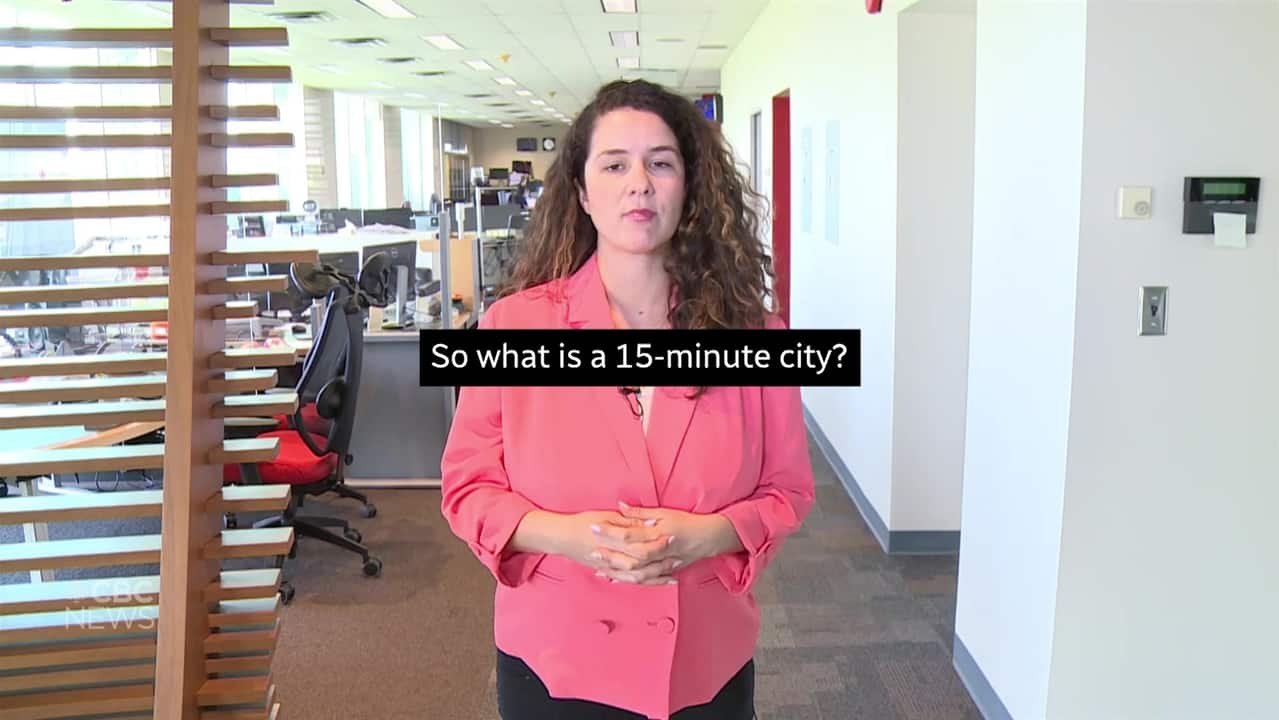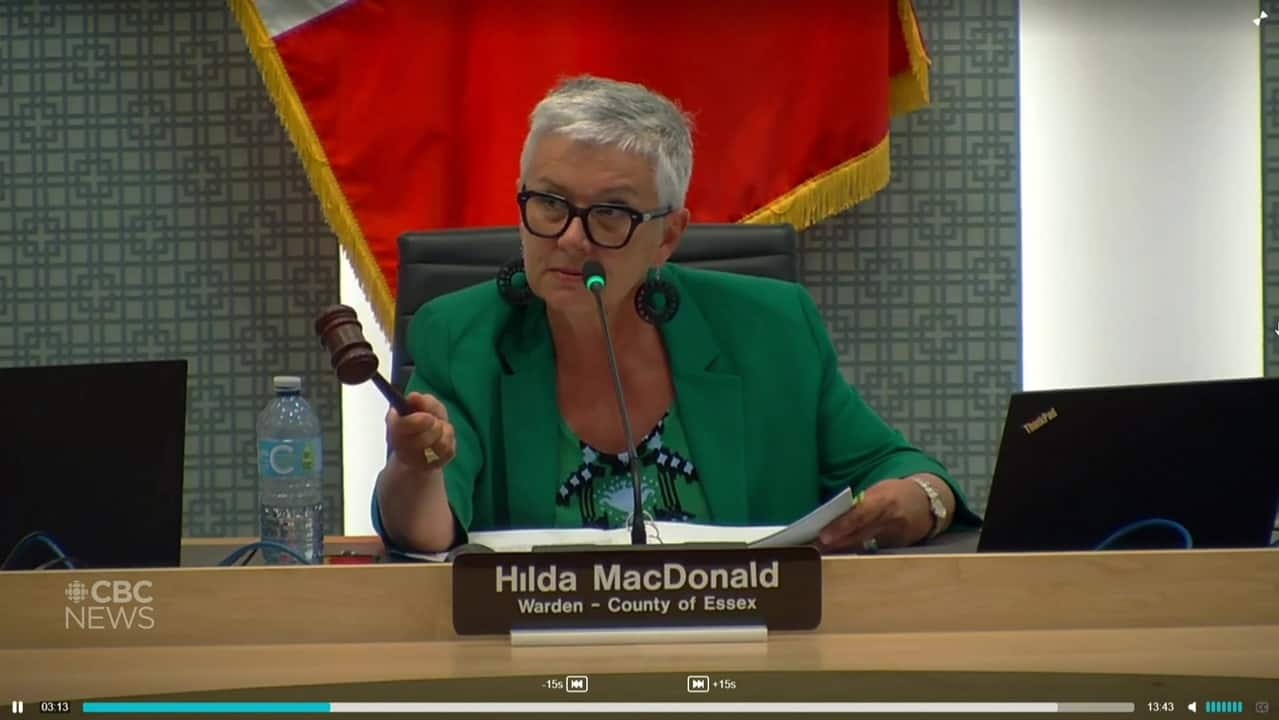Debunking the 15-minute-city conspiracy theory — and why it erupted at Essex County council
Hundreds of people poured into a special public meeting in Essex County in southwestern Ontario earlier this month where many believed officials would be discussing 15-minute cities — even though County of Essex officials stressed that wasn’t the case.
The meeting was cut short because of the size of the crowd — and left officials surprised by the response.
Not only is the 15-minute-city concept not a part of County of Essex’s plans — the concerns being raised by some residents are in line with what some experts describe as conspiracy theory thinking rather than rooted in what the concept is actually about.
What are 15-minute cities?
The 15-minute city concept at its core is an urban planning framework intended to set up communities in such a way that they would have access to all their needs within a 15-minute walk or bike ride from their homes — so, easier access to the grocery store, the bank, medical care, jobs, etc.
It was first coined by Carlos Moreno, a professor at the University of Paris 1 Pantheon-Sorbonne.
It’s already being worked on in cities like Paris. Over the last few years, it’s led to big investments to improve cycling infrastructure and biking amenities, according to Bloomberg, with a price tag that’s nearly $360-million.
CBC’s Katerina Georgieva explains.
Oxford, United Kingdom is also looking at implementing a similar concept in its long-term plan — but unfounded concerns over some of the proposed plans in the community have led to unrest.
Misinformation has flipped the script on the intended purpose of the 15-minute city, says researcher Carmen Celestini.
“It’s linked to all these conspiracy theories of enslavement and control,” explains Celestini, a lecturer at the University of Waterloo whose research focuses on conspiracy theories.
What’s the conspiracy theory linked to 15-minute cities?
Celestini explained that the conspiracy theory behind 15-minute cities is that it’s a form of government take-over.
People are fearful of a scenario where people would have digital identifications on them and would be forced to stay within a 15-minute radius around their homes, and that if people traveled beyond those boundaries, they would be tracked and targeted in different ways.
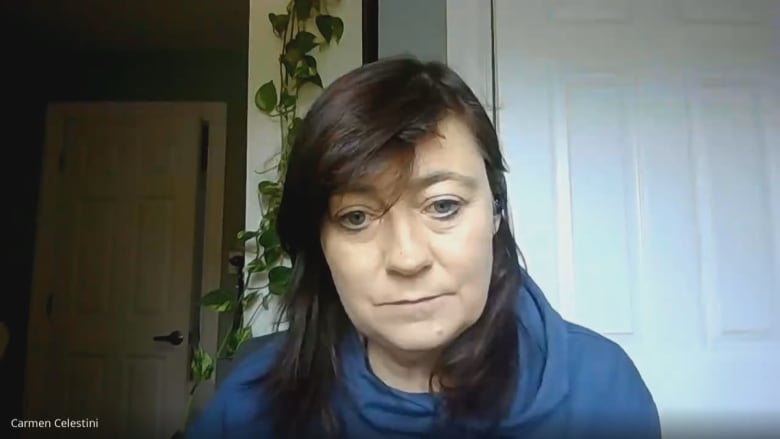
It’s also been embedded in a lot of other conspiracy theories related to QAnon and the Great Reset, associated with fears of tyrannical takeovers.
Celestini explained that after years of COVID restrictions and lock downs, ideas like 15-minute cities can sometimes seem more frightening than they are in reality.
Even the Canadian Institute of Planners issued a statement earlier this month to say that the scrutiny and misunderstanding of 15-Minute City objectives “has resulted in alarming instances of hostile behaviour and threats toward planners and public servants, disruptive conduct in consultation meetings, and the need for law enforcement interventions.”
It went on to explain that the concept framework is not a lockdown measure, a surveillance strategy, or a tool to enforce restrictive measures or boundaries.
The place people are looking at
Conspiracy theories took off last year in the United Kingdom, according to The Associated Press, as the community of Oxford approved new traffic restrictions to ease congestion as part of a temporary trial.
Drivers would need a special permit to travel along six busy roads during daytime hours.
The community would be using traffic cameras to read licence plates of those who are non-compliant and it could then lead to a fine.
In February, thousands protested this scheme in Oxford claiming this was threatening the freedom of motorists, according to a report from BBC.
Local officials had to issue a statement stressing that the traffic filters are in no way physical barriers, and in no way confine people to their local area. People can travel wherever they wish at any time, but drivers might need to take different routes.
It doesn’t restrict people’s movement, but limits options for drivers without a permit.
This is a separate initiative from the 15-minute cities which Oxford City Council was also endorsing through a planning document being developed.
Why is it coming up at the County of Essex?
Earlier this month, the County of Essex held a public council meeting to gather feedback from the community about its Comprehensive Official Plan Review — and it drew about 400 people into the building, many of whom were concerned that elements of the plan were linked to 15-minute cities.
The official plan is intended to serve as a long-term land use strategy for the county, to guide development over the next 30 years in a way that accommodates expected community growth while also including climate change response strategies as well.
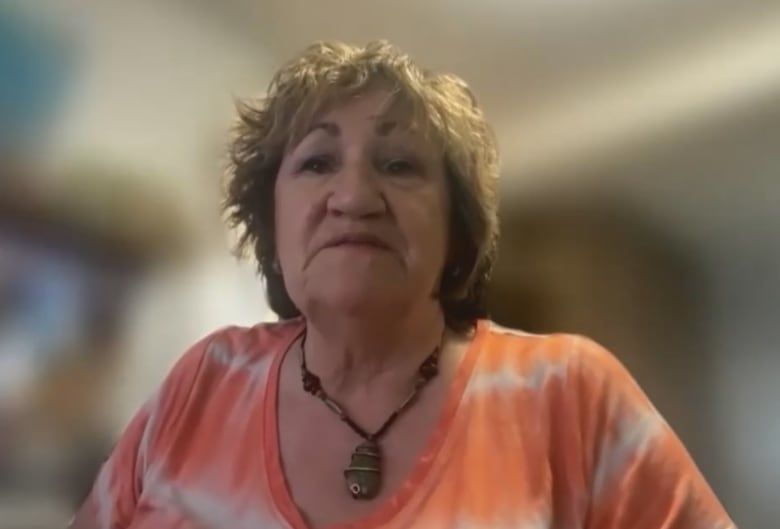
It’s nothing new.
The County has an official plan currently in place which was approved in 2014. However, the plan needs to be updated, as required by Ontario’s Planning Act, and requires public input.
There is zero mention of a 15-minute city in the plan review — but some, like Windsor resident Patsy Copus, believe the environmentally-friendly goals included like making areas more walkable, supporting transit, and energy reduction are a step in that direction.
She plans to attend the next meeting — and refers to the traffic filters in Oxford as an example of why she’s concerned.
She acknowledged that there are positive environmental benefits associated with the 15-minute city model, but worries about how far the concept could go, fearful of tracking and communities being separated into “zones.”
“We need to know what the other side of what they’re doing, like the monitoring side of it. Are they going to restrict people going, you know, from one zone to the other because you’ve got too big of a carbon footprint?”
WATCH | This is the livestream of the Special Meeting of Essex County Council on April 5, 2023, which was cut short:
This is the livestream of the Special Meeting of Essexy County Council on April 5, 2023. Off the top, Warden Hilda MacDonald attempted to address rumours the official plan had anything to do with the 15-minute city urban planning concept.
At the very top of the public meeting, Warden Hilda MacDonald attempted to dispel the rumours that the official plan had anything to do with 15-minute cities.
“It has nothing to do with 15-minute cities. You can trust me on that. It is not,” she said, which was followed by shouts from some members of the crowd.
Zero plans to restrict movement
The meeting drew in a crowd much larger than what council chambers could accommodate. People in the crowd said they couldn’t hear what was happening during the meeting. One council member said he heard some of the people in attendance uttering threats, which could not be heard on the live stream.
Council opted to cut the meeting short, and reschedule once they’ve found a bigger venue to accommodate more members of the public, with MacDonald stressing disrespectful outbursts would not be tolerated.
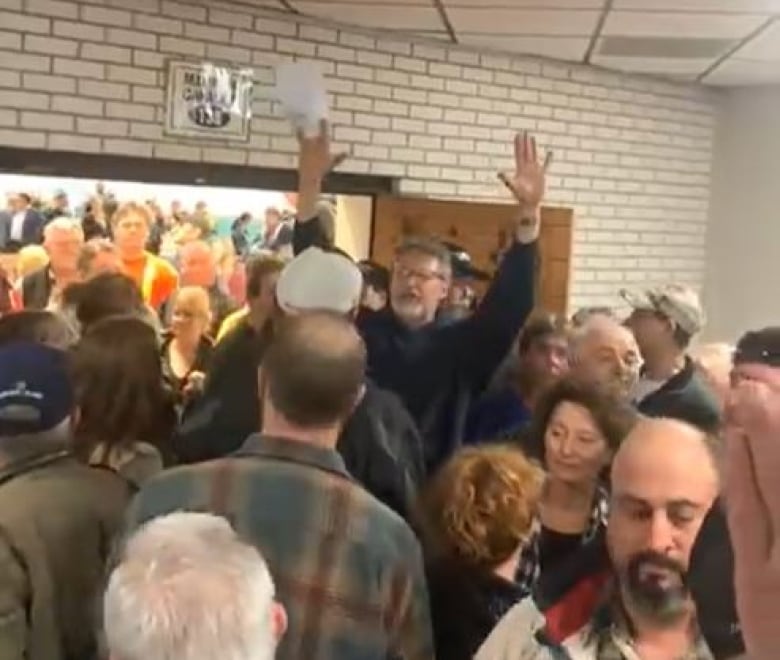
Rebecca Belanger, manager of planning for the County of Essex, said that not only are 15-minute cities not on the table at the present, or for the future, there are also zero plans to restrict any movements in the region.
She said she was surprised by this response from the community.
She explained that in the lead up to the meeting, she had received numerous e-mails and phone calls about whether the meeting had to do with 15-minute cities.
Though she attempted to clear up confusion and make it clear that it did not, the message didn’t seem to get across, she said.
“The point of it, was to hear public feedback, but we just couldn’t get the correct messaging turned around so that we could have an efficient public meeting,” she explained.
“Unfortunately this confusion and misinformation is being spread throughout Canada. So we happened to have experienced it last week in Essex County, but we’re certainly not the only ones.”

The county is in the early stages of getting feedback on their official plan, with a draft document expected to go to County Council for review and approval by either the end of this year or early 2024.
The next public meeting has yet to be announced.
Celestini says it’s important to engage with people who are expressing certain fears in order to be able to address those concerns rather than attempting to silence people’s fears.
“We have decided that if someone has a different opinion than us, then we will put a stereotype on them and just stop engaging with them,” she said.
“And we’re not having conversations, which is problematic because when we don’t, they just become far more ingrained in their communities and, you know, become more isolated from other communities and that creates an us versus them boundary that’s very hard to cross.”
